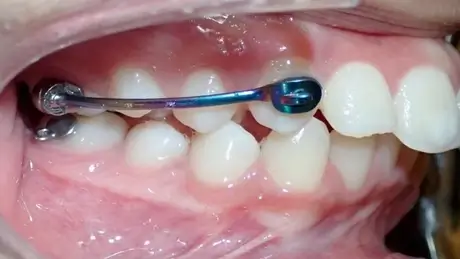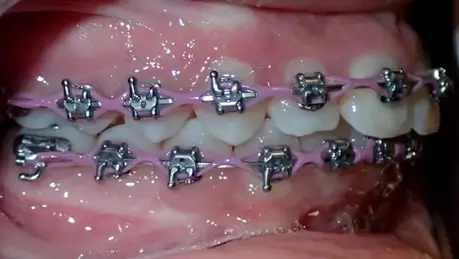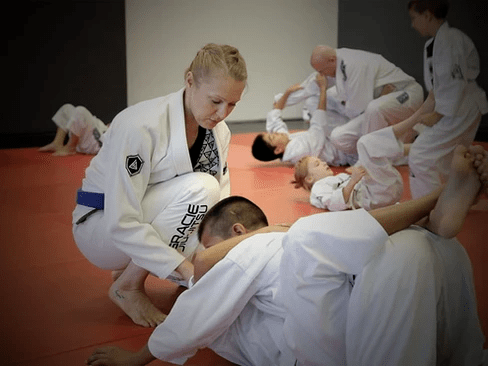What if My Child Has Buckteeth (an Overjet)?
Have you ever heard the term “buck-toothed”? The technical term for buck-teeth is an overjet and it is also sometimes called a protrusion. An overjet is a condition where the upper front teeth protrude outward and overlap the lower teeth horizontally. People with an overjet may find it difficult to close their lips which can make it difficult to swallow, chew, and speak clearly. While it may be inconvenient and uncomfortable, an overjet is definitely treatable at any age.
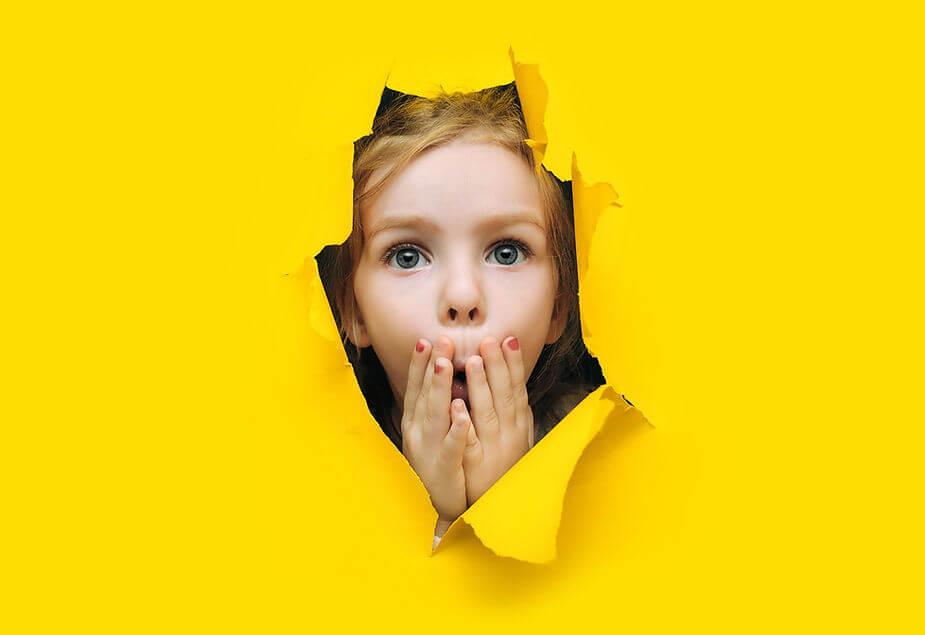
More often than not, people tend to use the terms overjet and overbite interchangeably. Although they are both characterized by a protrusion of the upper teeth, an overbite is measured by the vertical distance by which the upper teeth overhang the lower ones. When the top teeth cover around 25% of the bottom teeth, then it is considered an overbite. Meanwhile, a dental condition is considered an overjet when there is around 3-4 mm horizontal distance between the top and bottom teeth whenever the jaw is closed. You can think about it this way, both conditions have front upper teeth further forward than the lower but an overbite has upper teeth that are straight up and down while an overjet has teeth that stick out toward the front as well.
Unlike an overbite, which in minor cases is just fine if left untreated, an overjet is not just a minuscule dental problem - it can bring about complications when left untreated. Luckily, if you notice it developing in a child, it can be prevented from worsening, so it is helpful to understand why overjets exist in the first place. The following are some of the contributing factors in the development of buck teeth (overjets).
How an Overjet Develops
- Genetics - This condition is sometimes hereditary. Thus, if one of your parents has an overjet, there’s a possibility that you and your siblings may develop it, too. Studies have shown that both the form and size of a person’s dental arch are more likely a by-product of his or her genotype. So, facial appearance, including the shape of one’s upper and lower jaws, runs in the family.
- Thumb-sucking - is classified under non-nutritive sucking behavior (NNSB). It means that this particular sucking motion isn’t yielding any nutrition as it would from breastfeeding. When this habit carries on past the age of 3 or 4, the interaction between the mouth and fingers can potentially cause the teeth to protrude horizontally and be positioned at an abnormal angle. If the habit continues while adult teeth are emerging, it is likely to cause an overjet in the adult teeth.
- Prolonged Usage of a Pacifier - Pacifier or feeder-sucking is another manifestation of non-nutritive sucking behavior, and this can bring about an overjet or many other teeth misalignment issues. As explained by the Journal of the American Dental Association, prolonged pacifier use poses a risk of developing malocclusions such as overjets, crossbites, and overbites.
- Excessive Tongue Thrusting - If the tongue is shoved against the teeth for shorter periods, it may not result in a bad positioning of your front teeth. However, if it is thrust against the teeth consistently over a long period of time, it gradually pushes your upper front teeth forward and may eventually lead to an open bite or an overjet.
As you can see, perfectly normal childhood behaviors can create orthodontic problems if allowed to go on too long. Now that you know the underlying reasons why overjets develop, you may be able to address these behaviors in your child and prevent this from worsening. Unfortunately, when left untreated, an overjet can impact a child in many ways. Below are the potential consequences for not treating such a condition.
What Happens If It’s Left Untreated
- Chewing and Eating Discomfort - Abnormal tooth alignment in either jaw often leads to chewing problems, and improper chewing can further result in poor digestion. Also, people with overjets may experience mild to severe pain during biting and chewing, and even accidentally bite their lips and inner cheeks. Eating can become a continuous struggle if there is no help to change behaviors or orthodontic intervention along the way.
- Speech Issues - Since the lips and the top-front teeth are affected, an untreated overjet may lead to speech impediments. Usually, a person experiencing this dental condition has trouble pronouncing words containing the letters F, M, B, V, P, and S. That’s a huge challenge especially once a child begins attending school.
- Breathing Problems - An overjet doesn’t usually cause breathing problems, but the contributing factors that led to its formation do. A smaller jaw size not only results in overcrowded teeth but also in a tinier air passage which consequently poses breathing problems. Similarly, this would possibly lead to sleep-disordered breathing, sleep apnea, and snoring, hence affecting a person’s overall quality of life.
- Higher Risk of Damaging the Front Upper Teeth - When a child falls and lands on their mouth or gets hit in the face by something, they are much more likely to have their teeth be damaged if they have an overjet. The worse the overjet, the greater the likelihood of damage.
- Low Self-Esteem - As excessive overjets are usually characterized by an irregular facial appearance, this negatively affects a person’s self-esteem. Self-esteem is understood as the totality of an individual’s self-worth, self-confidence, and self-respect. The fact that people with overjets are sometimes the subject of teasing makes it hard for them to just accept and ignore this condition for their entire lives. Undeniably, a person’s overall dental health plays a vital role in building one’sself-esteem, and it could either create a positive impact - or a negative impact when obvious or severe malocclusions are not properly addressed and treated.
Treatment Options and Recommendations
Depending on the severity of the dental condition and age of the patient, orthodontic treatment here at Jungle Roots may last between 6 months to 3 years. During your complimentary orthodontic consultation, we will take essential diagnostic records in order to conduct a comprehensive smile analysis. After that process, we'll evaluate your current condition and be able to come up with a customized treatment plan that suits your financial needs and treatment goals.
Like any other dental issue, an overjet is definitely not without hope. There are a number of treatment options that we can explore if you or your child has an overjet.
Early Intervention/Orthopedic Treatment
In order to prevent excessive overjets and steer clear from dental surgeries as much as possible, a child showing early symptoms of an overjet should be evaluated as early as the age of 7. Just like any other dental issue, this condition can be treated far more easily when your kid is young than when he or she is older. This is because the condition is often still developing and their bones are more malleable compared to that of older patients. We call this orthopedic orthodontic treatment because we are guiding the growth and development of the teeth and jaws.
Additionally, if you begin to notice an overjet in a child younger than 7, please ask a team member or just call us and we can guide you regarding the best time to schedule the initial consultation. We can help provide advice and assistance in breaking any habit that may be causing it, as well as guiding your child’s growth and development to minimize more difficult problems that are harder to correct once a patient has stopped growing. Remember, prevention is always better than treatment!
Dental Braces and Elastic Wear
Braces are often an effective remedy for overjets. These are specifically designed to align and straighten teeth by gradually moving them into a new position. Elastic wear in conjunction with braces is how we achieve an ideal orthodontic result. Patient compliance is the most important part of treatment and we encourage the best habits so that patients can complete their treatment in the least amount of time. Here at Jungle Roots, various types of braces are available for treating an overjet, and because we utilize a self-ligating bracket system there are also fewer orthodontic appointments and added comfort on the patient’s end.
Extractions
With the onset of early intervention, the need for extracting any permanent teeth is very rare. But, in some cases, the only way to achieve an ideal orthodontic result and not compromise supporting bone and gums means that selective tooth extraction will be the best option for treating excessive overjets. When the maxillary first premolars are removed and the anterior teeth are retracted, the maxillary arch will be shortened, hence alleviating one’s malocclusion most especially if the patient has a short mandible.
Surgery
When left untreated as a developing child, surgical intervention as an adult may be the only way to achieve an ideal orthodontic result. But, with early diagnosis and intervention, it is very likely that the need for surgery can be avoided. At Jungle Roots, our early treatment options do help minimize more extensive problems from affecting the final outcome of skeletal growth in our patients. In those cases, where surgical intervention is necessary, coordinated care will be done between our orthodontist and maxillofacial surgeon to correct extreme teeth misalignment and jaw problems.
We are here to help!
Here at Jungle Roots, we gear our focus on prevention, which means giving sufficient patient education and early intervention to prevent complications in the future. We also provide excellent orthodontic consultations and design a customized treatment plan to fit your dental needs. It is our mission to assist you in achieving optimal oral health and bring out a sweet, confident smile, so never hesitate to reach out to us. We’re ready and equipped to serve you. With your willingness and cooperation, a lovely and functional smile is at hand!
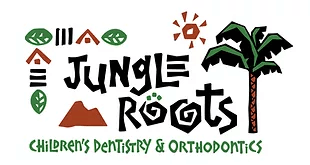
At Jungle Roots Children’s Dentistry & Orthodontics, we strive to provide the highest comprehensive pediatric and orthodontic dental care in a unique, fun-filled environment staffed by a team of caring, energetic professionals. We believe the establishment of a “dental home” at an early age is the key to a lifetime of positive visits to the dentist.






